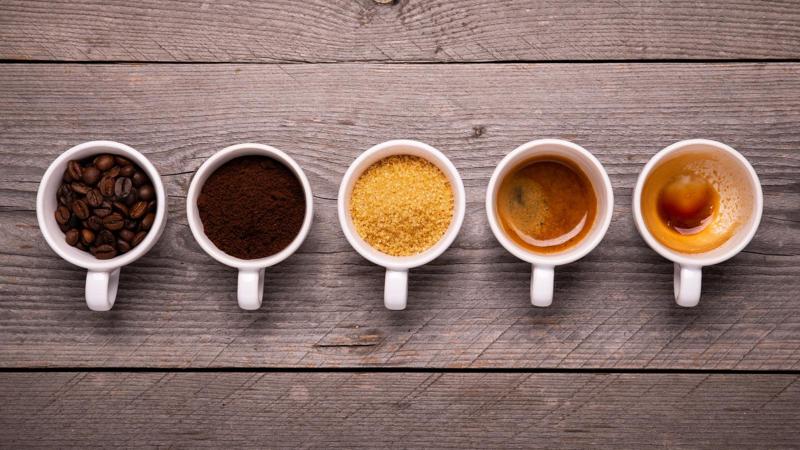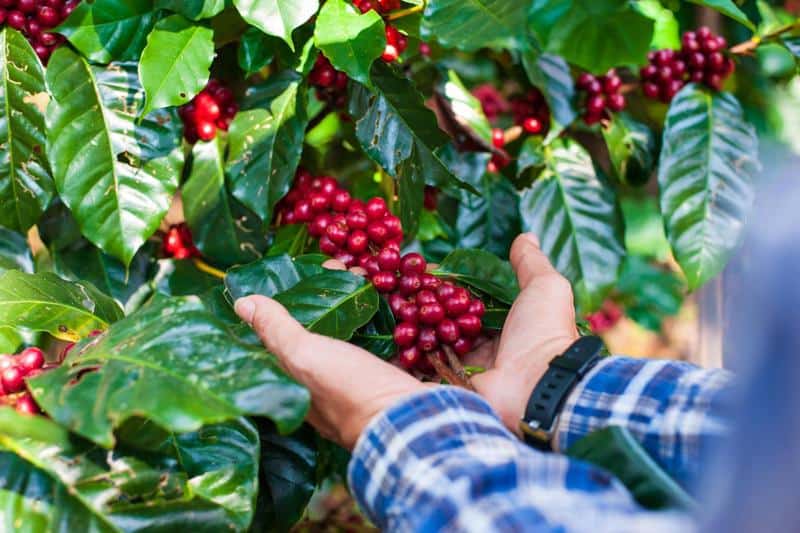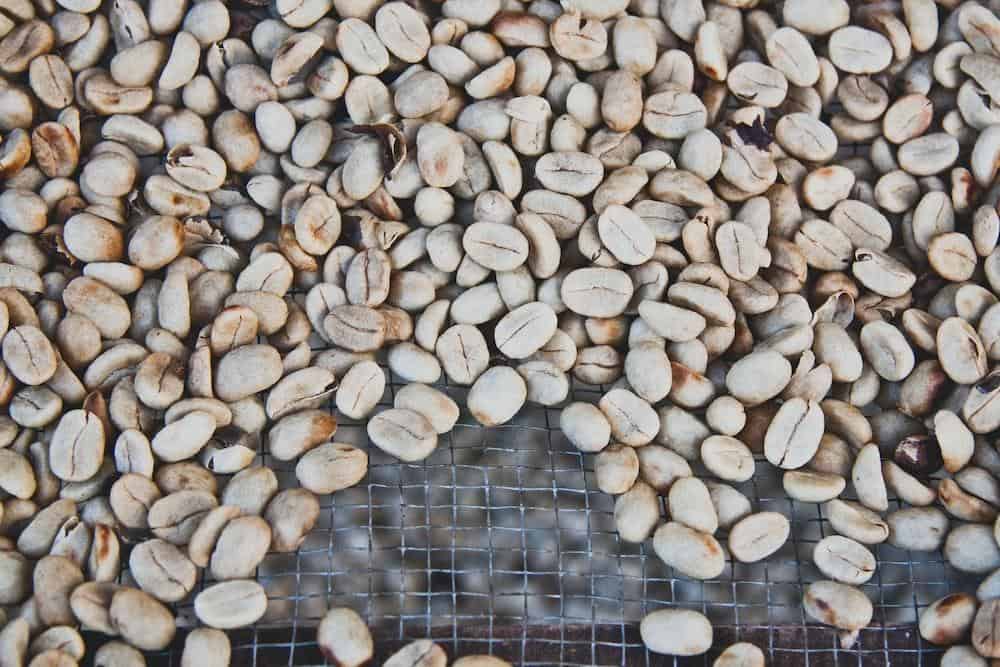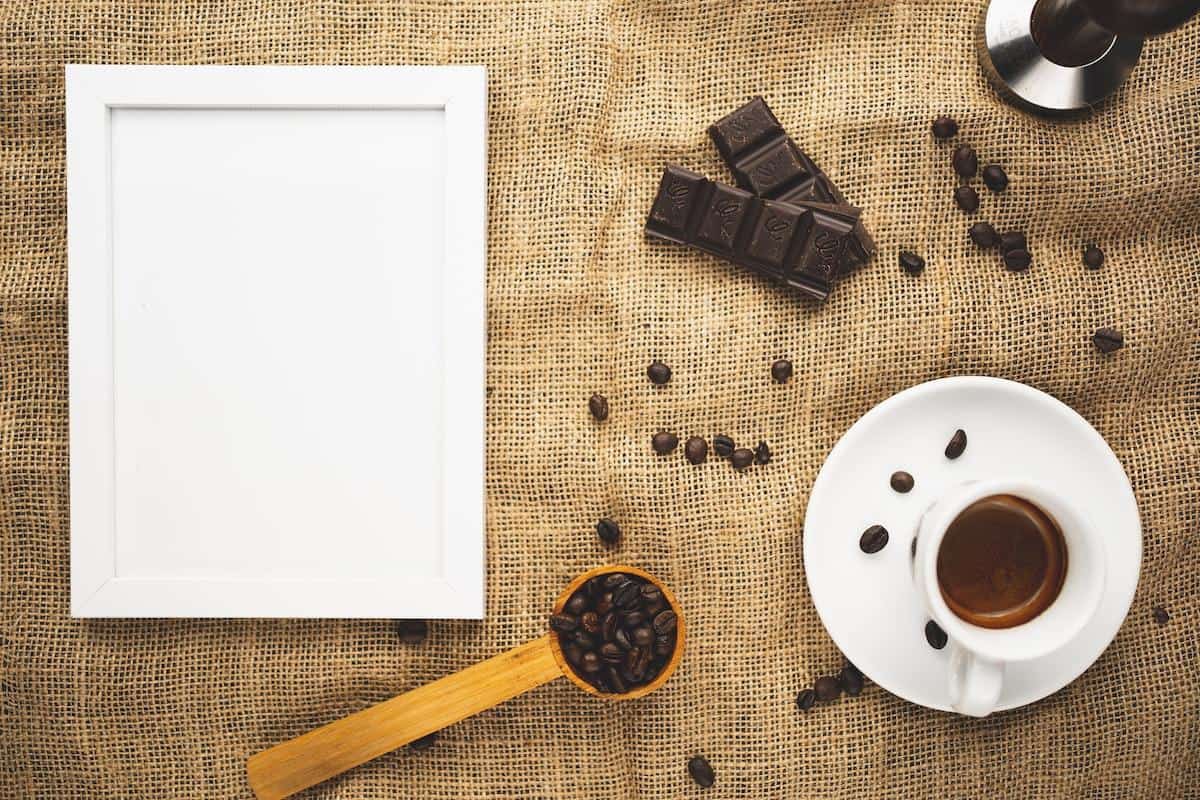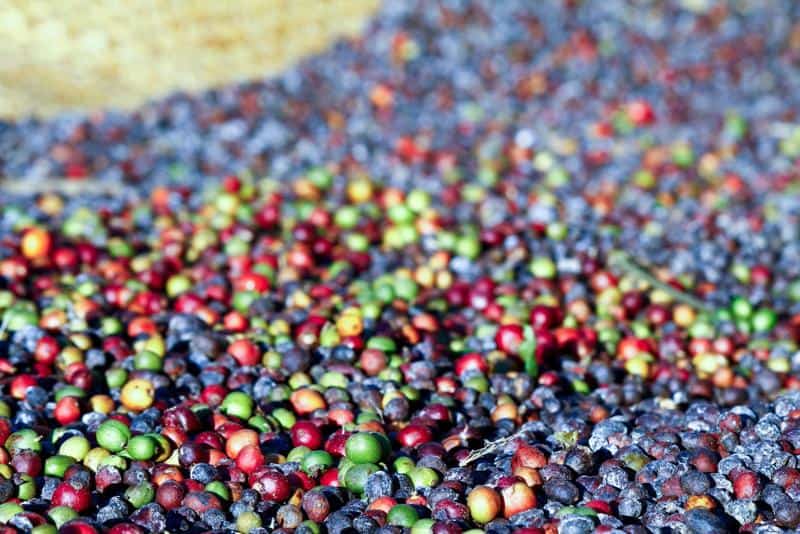Coffee, a beloved beverage enjoyed by millions of people worldwide, owes much of its popularity to one key ingredient: caffeine. As an infamous stimulant, caffeine has been long recognized for its ability to spark energy and improve focus. In this article, we will dive into the science behind caffeine, exploring how it works and why it is such a powerful boost. So prepare yourself for an informative and engaging journey through the world of caffeine in coffee beans.
Caffeine is a naturally occurring substance found in various plants, including coffee beans. Chemically speaking, it belongs to a group of compounds known as methylxanthines. When consumed, caffeine acts as a central nervous system stimulant, blocking adenosine receptors. Adenosine is a neurotransmitter that promotes relaxation and sleepiness. By blocking these receptors, caffeine prevents the buildup of adenosine and instead enhances alertness and concentration.
Coffee beans are among the most notable sources of caffeine in our diet. They come from the Coffea plant, which originated in tropical regions and has been cultivated for centuries. However, not all coffee beans are created equal when it comes to their caffeine content. Different varieties of coffee beans can have varying levels of this stimulant present within them. Furthermore, the roasting process also affects the amount of caffeine found in the final cup of joe.
In the following sections of this article, we will delve deeper into the role of caffeine on energy levels and its impact on our brain function and performance. We will also explore brewing methods that influence caffeine extraction and discuss considerations for healthy caffeine intake. So grab your favorite mug and get ready to discover how harnessing the power of caffeine in coffee beans can enhance your energy levels like never before.
What is Caffeine and How Does It Work?
Defining Caffeine and Its Chemical Composition
Caffeine is a natural stimulant that belongs to a class of compounds called xanthines. It is found in various plants, including coffee beans, tea leaves, and cacao pods. Chemically, caffeine is classified as a methylxanthine and has the molecular formula C8H10N4O2. It is made up of carbon, hydrogen, nitrogen, and oxygen atoms.
The Stimulating Effect on the Nervous System
Once consumed, caffeine quickly enters the bloodstream and makes its way to the brain. It acts as a central nervous system stimulant by blocking adenosine receptors. Adenosine is a neurotransmitter that promotes feelings of drowsiness and sleepiness. By binding to these receptors, caffeine prevents adenosine from exerting its effects on the central nervous system.
The blocked adenosine receptors initiate a series of reactions in the brain that lead to increased neural activity. This heightened neural firing triggers the release of other neurotransmitters like dopamine and norepinephrine, which are responsible for promoting alertness and enhancing mood. The surge of dopamine also contributes to the pleasurable sensations one experiences after consuming caffeine.
The Role of Adenosine Receptors and How Caffeine Blocks Them
Adenosine receptors play an essential role in regulating sleep-wake cycles by slowing down nerve cell activity when adenosine binds to them. However, caffeine’s molecular structure closely resembles adenosine, allowing it to bind to these same receptors without activating them fully. As a result, this blockage leads to increased neuron firing and keeps individuals awake and energized.
Moreover, prolonged exposure to caffeine can cause an upregulation of adenosine receptors in the brain as a compensatory mechanism. This means that over time, more adenosine receptors can be produced to counteract the effects of caffeine. Consequently, regular coffee drinkers may develop a tolerance to caffeine and require higher doses to achieve the same stimulant effects.
Understanding how caffeine works in the body is crucial when it comes to harnessing its potential benefits for enhanced energy levels. By blocking adenosine receptors and stimulating the central nervous system, caffeine helps individuals stay awake, focused, and energized throughout the day. However, it is important to be mindful of individual sensitivity to caffeine and its potential side effects, which will be further discussed later in this article.
Caffeine in Coffee Beans
Coffee beans are well-known for being a rich source of caffeine, a natural stimulant that is widely consumed for its energizing effects. In this section, we will explore the origin and cultivation of coffee beans, the variations in caffeine content among different coffee bean varieties, and how caffeine develops in coffee beans during roasting.
Coffee beans come from the seeds of coffee plants, which are primarily grown in tropical regions around the world. The two most common types of coffee plants are Coffea arabica and Coffea robusta. Arabica beans are generally considered to have a milder taste and higher quality, while robusta beans tend to be more bitter but have higher caffeine content.
The amount of caffeine present in coffee beans can vary depending on several factors, including the type of coffee plant, growing conditions, and processing methods. On average, a cup of Arabica coffee contains about 95 milligrams (mg) of caffeine, while a cup of Robusta coffee can have around 150 mg. However, these numbers can fluctuate significantly depending on the specific variety and preparation method.
During the roasting process, caffeine levels can also change. Contrary to popular belief, darker roasted coffee does not necessarily mean higher levels of caffeine. While it is true that some caffeine content is lost during roasting due to evaporation, darker roasts tend to have a stronger flavor profile that may mask some of the bitterness associated with high caffeine levels.
| Factor | Caffeine Content (Average) |
|---|---|
| Arabica Coffee | 95 mg per cup |
| Robusta Coffee | 150 mg per cup |
| Lighter Roasts | Higher caffeine content |
| Darker Roasts | Slightly lower caffeine content due to potential evaporation during roasting process |
Benefits of Caffeine on Energy Levels
Caffeine, a natural stimulant found in coffee beans, has long been hailed for its ability to boost energy levels and ward off fatigue. Many people rely on their morning cup of coffee to jumpstart their day, and for good reason. Caffeine works by blocking the function of a neurotransmitter called adenosine, which promotes sleep and relaxation. This blockage leads to increased neuronal firing in the brain and the release of other stimulating neurotransmitters like dopamine and norepinephrine.
One of the key benefits of caffeine is its impact on alertness and concentration. Studies have shown that caffeine improves cognitive function, memory, reaction time, and overall mental performance. By enhancing brain activity, caffeine helps individuals stay focused, especially during tasks that require sustained attention. Whether it’s powering through a work project or staying engaged during a long meeting, the energizing effects of caffeine can make a significant difference.
In addition to improving mental clarity, caffeine also has profound effects on physical performance. It stimulates the nervous system, signaling fat cells to break down body fat and release them into the bloodstream as free fatty acids.
This not only provides an additional source of fuel but also allows muscles to use these fatty acids as an energy source instead of glycogen, which helps delay muscle fatigue. As a result, athletes often consume caffeine before workouts or competitions to enhance endurance and maximize performance.
| Benefits | Description |
|---|---|
| Enhances alertness and concentration | Caffeine improves cognitive function and can help individuals stay focused. |
| Combats fatigue and drowsiness | Caffeine stimulates the nervous system and delays muscle fatigue, increasing endurance and energy levels. |
The Science of Caffeine and the Brain
Caffeine, the powerhouse stimulant found in coffee beans, has a fascinating impact on the brain. Understanding how caffeine interacts with neurotransmitters can shed light on its effects on mood, cognitive function, and mental clarity. In this section, we will delve into the science behind caffeine and its influence on the brain.
When consumed, caffeine affects various neurotransmitters in the brain, leading to its energizing effects. One key neurotransmitter influenced by caffeine is adenosine. Adenosine is responsible for promoting sleep and relaxation by binding to adenosine receptors in the brain. However, caffeine blocks these receptors, preventing adenosine from exerting its calming effects. As a result, individuals feel more alert and awake after consuming caffeine.
Another neurotransmitter affected by caffeine is dopamine. Dopamine plays a crucial role in our reward system and is often associated with feelings of pleasure and motivation. Caffeine stimulates the release of dopamine in the brain, which contributes to improved mood and a sense of well-being. The surge of dopamine can also enhance focus and attention.
Furthermore, caffeine has been shown to improve cognitive function and mental clarity. It increases blood flow to the brain, leading to improved delivery of oxygen and nutrients necessary for optimal brain performance. This enhanced cerebral circulation can result in improved memory consolidation, attention span, and overall cognitive ability.
The Different Brewing Methods and Caffeine Extraction
Comparing Brewing Methods
When it comes to brewing coffee, there are various methods available, each with its unique characteristics and flavors. Some of the most popular brewing methods include espresso, drip coffee, and French press. It’s important to note that these methods not only affect the taste of your coffee but also the amount of caffeine extracted.
Caffeine Extraction: How Brewing Methods Matter
The amount of caffeine in your cup of coffee can vary depending on the brewing method you choose. Understanding how different methods extract caffeine can help you tailor your brewing process to achieve your desired caffeine content.
Espresso, known for its strong and concentrated flavor, is often assumed to contain higher levels of caffeine compared to other brewing methods. However, this is a common misconception. The truth is, espresso actually contains less caffeine per serving than drip coffee. This is due to the shorter extraction time and smaller serving size typically associated with an espresso shot.
On the other hand, drip coffee allows for a more prolonged contact between water and coffee grounds during extraction. As a result, drip-brewed coffee tends to have higher caffeine content than espresso on average. The exact amount can still vary based on factors such as the type of beans used or the grind size.
The French press method involves steeping coarsely ground coffee beans in hot water for an extended period before pressing them down with a plunger. This method allows for full immersion and contact between water and coffee grounds, resulting in a rich and robust flavor profile. While French press does produce strong-tasting coffee, it does not necessarily mean it has more caffeine than other methods. In fact, it falls somewhere between espresso and drip coffee in terms of caffeine content.
Tips for Maximizing Caffeine Content
If you’re looking to maximize your caffeine intake through your preferred brewing method, there are a few tips you can follow. First, using a finer grind size can increase the caffeine extraction as more surface area of the coffee grounds comes into contact with water.
Additionally, using a higher coffee-to-water ratio can also result in a stronger brew and higher caffeine content. Experimenting with these variables while keeping the taste preferences in mind can help you find the perfect balance for your desired caffeine boost.
It’s important to remember that the brewing method is just one aspect that affects caffeine content. The type of coffee beans used and their specific characteristics play a significant role as well. It’s always recommended to choose high-quality coffee beans from reputable sources to ensure consistent taste and caffeine levels.
Understanding how different brewing methods extract caffeine can empower coffee lovers to tailor their brewing process according to their preferences and desired energy levels. Whether you prefer a strong espresso shot or a flavorful drip coffee, knowing the impact of brewing methods on caffeine extraction allows you to make an informed choice when it comes to your daily cup of joe.
Considerations for Caffeine Intake
Caffeine is a widely consumed stimulant found in various food and beverages, with one of the most popular sources being coffee beans. While caffeine can provide a powerful boost in energy levels, it is essential to consider certain factors regarding its intake to ensure a safe and enjoyable experience.
In this section, we will discuss recommended daily caffeine limits for different populations, potential side effects of excessive consumption, and provide tips for individuals who may be sensitive to caffeine or prefer alternatives to coffee.
Recommended Daily Caffeine Limits
It is important to be aware of your personal caffeine tolerance and limitations as excessive intake can lead to undesirable effects. The FDA suggests that the generally recognized safe amount of caffeine consumption per day for healthy adults is up to 400 milligrams (mg). This amount is approximately equivalent to four cups of brewed coffee or ten cups of black tea.
However, different populations may have specific recommendations due to variations in metabolism and sensitivity. For example:
- Pregnant women are advised to limit their caffeine intake as high doses have been associated with negative effects on fetal development. The American College of Obstetricians and Gynecologists recommends limiting daily caffeine intake to 200 mg during pregnancy.
- Children and adolescents should consume less caffeine than adults as they may be more sensitive to its effects. The American Academy of Pediatrics suggests that children ages 12 and under should avoid caffeinated beverages altogether.
- Individuals with certain health conditions such as heart problems or anxiety disorders should consult with their healthcare provider regarding appropriate caffeine consumption.
Potential Side Effects of Excessive Caffeine Consumption
While moderate amounts of caffeine can be beneficial, consuming too much can lead to adverse reactions. Some common side effects include:
- Increased heart rate: Caffeine stimulates the nervous system, which can cause an elevated heart rate in some individuals. This effect may be intensified in people with underlying heart conditions.
- Restlessness and anxiety: Caffeine is a known stimulant that can lead to feelings of restlessness, jitters, or increased anxiety, especially in those prone to such symptoms.
- Sleep disturbances: Consuming caffeine close to bedtime can interfere with sleep quality and duration. It is recommended to avoid caffeine for at least six hours before sleeping.
Tips for Individuals Sensitive to Caffeine and Alternatives to Coffee
If you are sensitive to caffeine or prefer alternatives to coffee but still desire a flavorful beverage, consider the following options:
- Herbal teas: Many herbal teas are naturally caffeine-free and provide an array of flavors and health benefits. Popular choices include chamomile, peppermint, and rooibos tea.
- Decaffeinated coffee: Decaf coffee still contains trace amounts of caffeine but significantly less than regular coffee. It allows you to enjoy the aroma and taste of coffee without experiencing the stimulating effects of caffeine.
- Non-coffee alternatives: There are numerous non-coffee beverages available that offer natural energy boosts without the presence of caffeine. These include matcha green tea, yerba mate, or freshly squeezed fruit juices.
It is crucial to listen to your body’s response when consuming caffeinated beverages and make informed choices based on your tolerance level and health considerations. By understanding the recommended daily limits, potential side effects, and alternative options available, you can fully enjoy the benefits of caffeine while maintaining a balanced lifestyle.
Caffeine Myths Debunked
Caffeine is a substance that has been surrounded by myths and misconceptions for years. In this section, we will debunk some of the most common myths about caffeine and provide evidence-backed information to separate fact from fiction.
One of the most prevalent myths about caffeine is that it is highly addictive. While caffeine does have stimulant properties, research suggests that it does not meet the criteria for addiction like other substances such as drugs or alcohol. Studies have found that moderate consumption of caffeine is safe for most individuals and does not lead to dependence or withdrawal symptoms when discontinued.
Another myth surrounding caffeine is that it can cause dehydration. While caffeine does have diuretic effects, meaning it may increase urine production, it does not appear to cause dehydration when consumed in moderate amounts. Research shows that beverages containing caffeine, such as coffee, still contribute to overall hydration and can be counted towards daily fluid intake.
Additionally, there is a misconception that consuming caffeinated beverages can stunt growth in children and adolescents. However, studies have found no evidence to support this claim. Moderate caffeine consumption in children has been deemed safe by health experts, with guidelines suggesting limits based on age and weight.
It’s important for individuals to make informed choices about their caffeine consumption based on scientific evidence rather than relying on widespread myths and misconceptions. By understanding the facts about caffeine, people can utilize its benefits responsibly while avoiding potential negative impacts on their health.
Conclusion
In conclusion, the power of caffeine in coffee beans cannot be overlooked when it comes to sparking energy. It is clear from this discussion that caffeine is a powerful stimulant that works by blocking adenosine receptors and stimulating the nervous system. Coffee beans serve as a natural source of caffeine, with variations in caffeine content among different varieties and development during the roasting process.
One of the key benefits of caffeine on energy levels is its ability to enhance alertness and concentration. By combating fatigue and drowsiness, caffeine allows individuals to stay focused and productive throughout the day. Additionally, research has shown that caffeine can improve physical performance and endurance, making it a popular choice for athletes and active individuals.
Furthermore, understanding the science of how caffeine affects the brain provides insight into its impact on mood, cognitive function, and mental clarity. Dopamine release plays a crucial role in boosting mood, while improved neurotransmitter activity leads to enhanced cognitive abilities. This combination of increased energy levels and mental acuity makes caffeine an attractive option for those seeking an extra boost.
It is important to approach caffeine consumption with consideration and moderation. While there are recommended daily limits for various populations, it’s essential to be aware of potential side effects associated with excessive intake. Individuals who are sensitive to caffeine can explore alternatives to coffee or opt for decaffeinated options.
In summary, harnessing the power of caffeine in coffee beans can lead to enhanced energy levels and improved overall performance. By staying informed about their own tolerance levels and making mindful choices about their caffeine intake, individuals can truly benefit from this natural stimulant found in their morning cup of joe.
Frequently Asked Questions
How much caffeine is in 10 grams of coffee beans?
The amount of caffeine in 10 grams of coffee beans can vary depending on the type and origin of the beans. On average, a typical cup of coffee contains approximately 95 milligrams (mg) of caffeine.
Assuming this average, if we consider that a standard serving size for coffee is around 12 grams, then 10 grams would contain roughly 79 mg of caffeine.
Can you get a caffeine buzz from eating coffee beans?
Yes, it is possible to experience a caffeine buzz from eating coffee beans. Coffee beans contain high levels of caffeine and consuming them directly can lead to an increase in energy and alertness.
However, it is important to note that eating coffee beans provides a concentrated dose of caffeine compared to brewed coffee. Therefore, it is crucial to consume them in moderation to avoid potential side effects such as jitters or insomnia.
How much caffeine is in 7g of coffee beans?
Similar to the previous answer, the exact amount of caffeine in 7 grams of coffee beans will depend on various factors such as bean type and roast level. If we use the average estimate mentioned earlier (95 mg per cup), then 7 grams would provide approximately 55 mg of caffeine.
Are coffee beans 100% caffeine?
No, coffee beans are not 100% caffeine. While they do contain significant amounts of caffeine, there are other components present as well. Coffee beans consist of carbohydrates, lipids (oils), proteins, minerals, fibers, and other organic compounds besides caffeine. The percentage composition may vary based on the specific bean variety and processing methods.
How much caffeine is in 100g of coffee beans?
Extending our previous calculations with an estimated average of 95 mg per cup (based on 12 grams), we can conclude that 100 grams of coffee beans would contain around 792 mg of caffeine.
However, it is essential to remember that these numbers are approximate and can vary depending on factors such as bean type, brewing method, grind size, and personal preference for strength or concentration when making coffee beverages at home.

